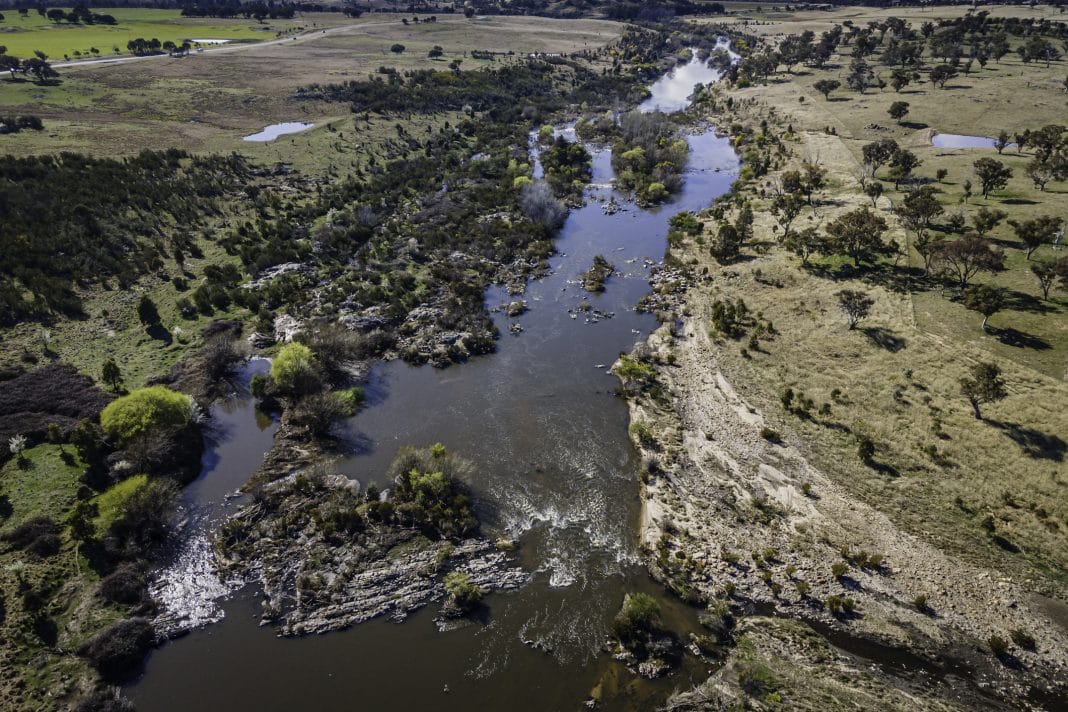Canberra’s waterways have bounced back strongly from the 2019 bushfire season, thanks to recent rain, according to a new report.
Forty-three of the 96 reaches of the upper Murrumbidgee catchment show improvement, the 2021 Waterwatch Catchment Health Indicator Program (CHIP) report states.
The report found that 2021 was the fifth wettest year on record. As a result of rain, phosphorus concentrations had declined since the impacts of the bushfires, causing rivers to become clearer. Catchments like Hospital and Bogong creeks in Namadgi National Park markedly improved.
“The improvements aren’t all a consequence of the wet weather,” said Woo O’Reilly, Upper Murrumbidgee Waterwatch facilitator.
“Ongoing efforts to reduce nutrient inflow, build new infrastructure like wetlands, and educate community members about how to care for our waterways are also having an impact. It’s important that we continue working with the community to restore river health to ensure such positive results endure long after the La Niña season has ended.”
The report is based on 1,779 water quality surveys, 181 water bug surveys, and 219 riparian condition surveys conducted by more than 200 volunteers at 229 sites across the upper Murrumbidgee catchment at Cooma, Ginninderra, Molonglo, the Southern ACT, and Yass.
“The CHIP report provides both the community and the ACT Government with a greater understanding of the health of our waterways, waterbugs, and riparian vegetation,” said Shane Rattenbury, ACT Minister for Water.
“The regular surveys offer valuable insights into catchment health, which is important information for natural resource managers and policy makers.”
Out of 96 report cards, 51 per cent were in the excellent or good range – better than previous years’ reports. Seven were in ‘excellent’ health, 42 were ‘good’, 45 were rated as ‘fair’, and two received a ‘poor’ rating. 43 of the 96 reaches showed improvement, 35 remained steady, and only 18 showed a decline. None were degraded.
Half the reaches showing declines were in urban wetlands and waterways, including Lake Tuggeranong and Lake Ginninderra, as well as some smaller wetlands.
“High nutrient levels in the form of nitrate and phosphorus were regularly detected washing off the surrounding suburbs, and waterways adjacent to development sites continued to experience high turbidity,” Mr Rattenbury said.
Mr Rattenbury suggested all Canberrans should “do their bit” to improve stormwater by cleaning up the leaves in their gutters.
The report also showed the value of having more naturalised urban landscapes (such as wetlands) to treat stormwater before it enters rivers and streams.
For instance, the Holder Wetlands, finished in 2019, was already drawing polluting nutrients out of the system, Mr Rattenbury said. Early data shows degraded levels of nitrate and phosphorus entering the wetland reduced tenfold upon leaving the wetland.
“This ultimately sends better quality water into our rivers, and helps reduce the incidence of harmful blue-green algae in our waterways,” Mr Rattenbury said.
Mr Rattenbury thanked the volunteers for their work protecting the ACT’s waterways.
“Our citizen scientists play a vital role in monitoring, restoring, and protecting our local waterways, as well as educating the community about waterway health,” Mr Rattenbury said.
“The important data and insights found in the CHIP report would not be possible without the work of the many volunteers who are involved.”



